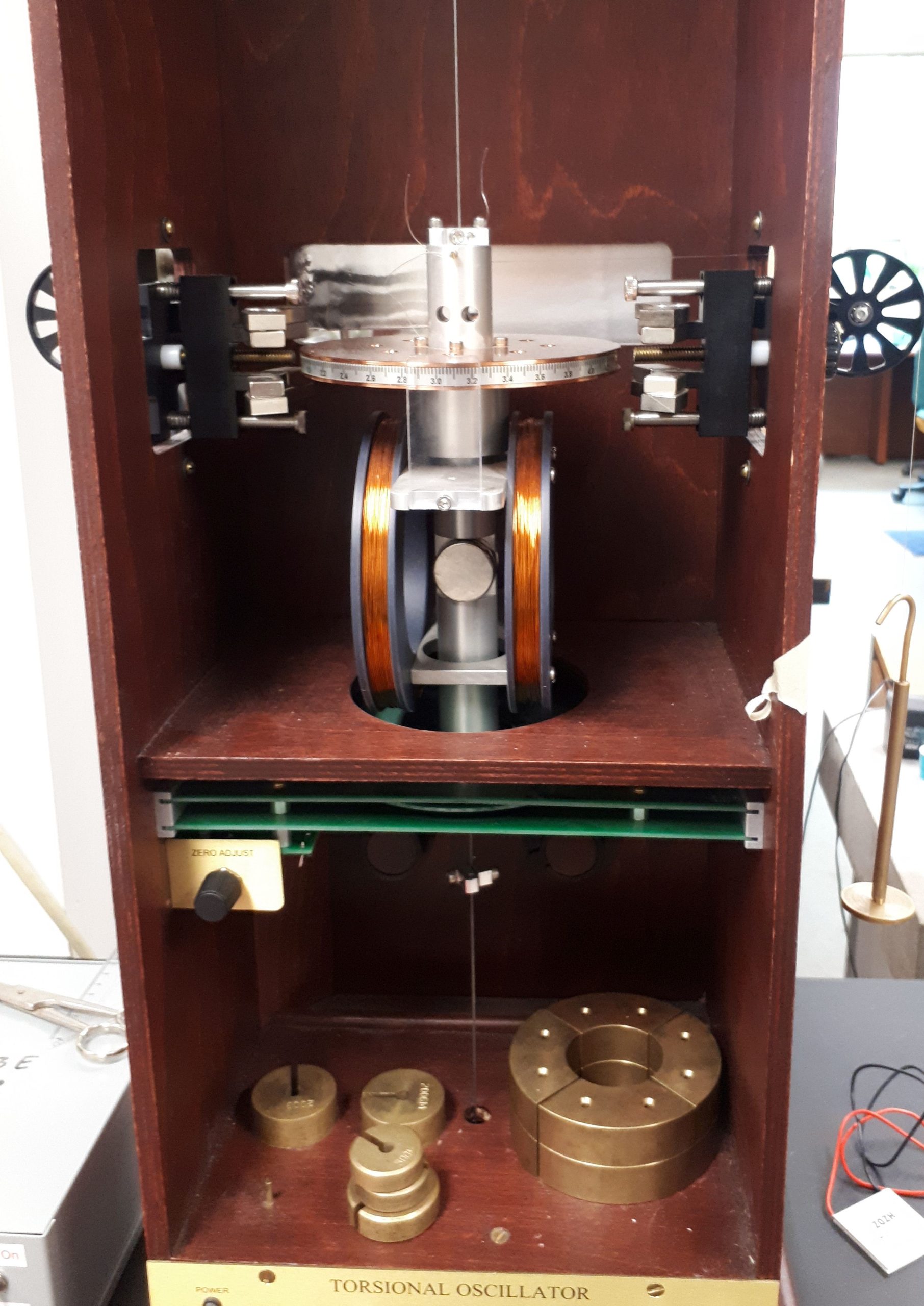Torsional Oscillator
Introduction
2.1 Torsional Constant
The torsional constant of a wire (or a bar/rod) is a measure of how much torque is required to twist the wire by one radian. We restate that point in the following equation:
(1) ![]()
where ![]() is the applied torque in units of Newton-meters,
is the applied torque in units of Newton-meters, ![]() is the angle that the wire has rotated in units of radians, and
is the angle that the wire has rotated in units of radians, and ![]() is the torsional constant. If one can apply a known torque and measure the twist of the wire, then the torsional constant is trivially measured. As you can imagine, how easily a rod or beam can be twisted by some torque has many applications in civil engineering and in areas of biophysics such as prosthetic design. New techniques that allow researchers to study individual molecules have opened up the study nanomechanical properties of biological molecules [1].
is the torsional constant. If one can apply a known torque and measure the twist of the wire, then the torsional constant is trivially measured. As you can imagine, how easily a rod or beam can be twisted by some torque has many applications in civil engineering and in areas of biophysics such as prosthetic design. New techniques that allow researchers to study individual molecules have opened up the study nanomechanical properties of biological molecules [1].
2.2 Rotational Inertia
Imagine some mass, like a copper disk, is attached to the wire and some torque is applied so that the disk is rotated some number of radians. If the torque is released, the system will undergo harmonic oscillation due to the restoring force of the twisted wire, much like the harmonic oscillation of a mass on a spring. You may be familiar with the following equation for the period of a mass on a spring:
(2) ![]()
where ![]() is the period,
is the period, ![]() is the mass, and
is the mass, and ![]() is the spring constant. There is an analogous equation for the period of the rotational motion that you are investigating:
is the spring constant. There is an analogous equation for the period of the rotational motion that you are investigating:
(3) ![]()
where ![]() is the period,
is the period, ![]() is the rotational inertia, and
is the rotational inertia, and ![]() is the torsional constant of the wire. Note that, like any harmonic oscillator, the period is not dependant on the amplitude of the oscillations. Also note
is the torsional constant of the wire. Note that, like any harmonic oscillator, the period is not dependant on the amplitude of the oscillations. Also note Figure 1: The torsional oscillator apparatus that if one knows the torsional constant of the wire or bar, then one can measure the period of rotation to determine the rotational inertia of any object, or predict the period of oscillation if the rotational inertia can be calculated.
Figure 1: The torsional oscillator apparatus that if one knows the torsional constant of the wire or bar, then one can measure the period of rotation to determine the rotational inertia of any object, or predict the period of oscillation if the rotational inertia can be calculated.
that if one knows the torsional constant of the wire or bar, then one can measure the period of rotation to determine the rotational inertia of any object, or predict the period of oscillation if the rotational inertia can be calculated.
The rotational inertia of a disk is given by ![]() , where
, where ![]() is the mass of the disk,
is the mass of the disk, ![]() is its inner radius and
is its inner radius and ![]() is the outer radius.
is the outer radius.
